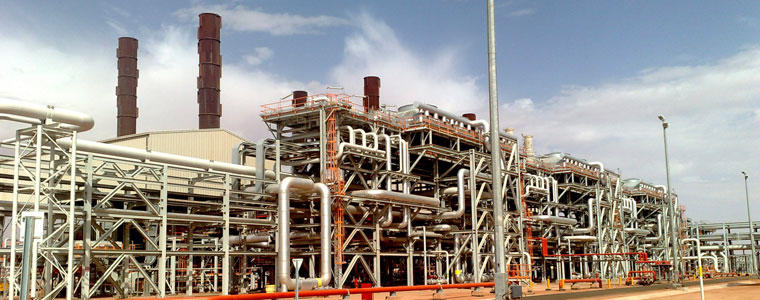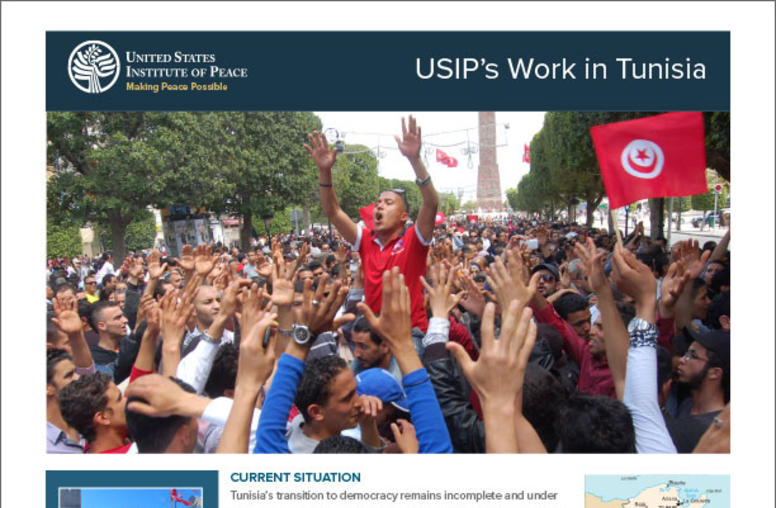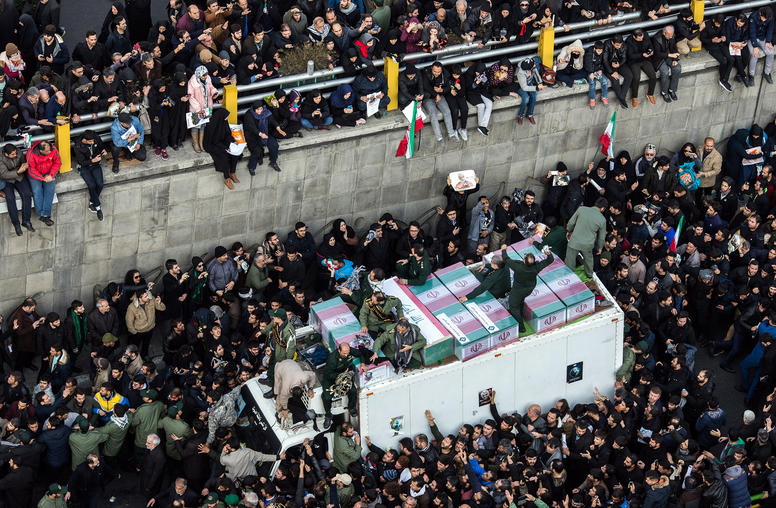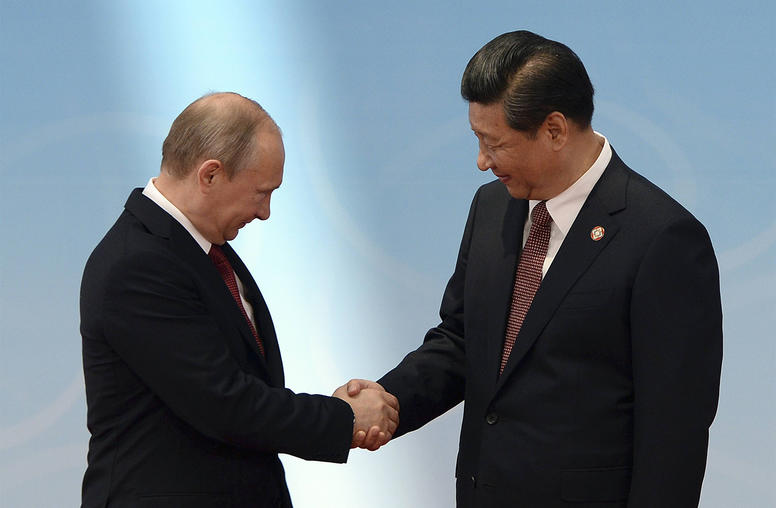Regional Security Lessons from the Attack on Algeria's In Amenas Gas Plant
USIP expert Raymond Gilpin and associates say the ramifications of the gas plant attack extend to fundamental questions about how we look at securing energy facilities in violence-prone regions.

This month’s attack on the In Amenas gas refinery and housing complex in southeastern Algeria raises questions beyond the nature, timing and implications of the Algerian government’s response. The incident highlights our need to understand the vulnerability of energy infrastructure as a magnet for attacks in violence-prone regions, as well as the motivations and modus operandi of militant groups in the 21st Century.
A coalition of transnational militia groups attacked the gas facilities run by BP, Statoil and Sonatrach (Algeria’s state-owned energy company) on Jan. 16. The assault resulted in a four-day stand-off that cost dozens of lives, traumatized thousands and deprived the country of more than $10 million in lost revenue daily. It also will cost millions more for reconstruction and additional security.
Another casualty of this incident is the notion of relative security in the fragile Maghreb.
USIP's Center for Sustainable Economies is conducting an empirical study that examines global patterns of energy infrastructure attacks perpetrated by a range of violent groups and individuals. The Energy Infrastructure Attack Database, developed by the Center for Security Studies (ETH University ) in collaboration with the Paul Scherrer Institute, both based in Switzerland, indicates that average annual attacks on energy infrastructure have risen from slightly more than 200 worldwide during 1980-99 to 380 over the last decade, 2000-11.
Not only do attacks tend to cluster in certain regions, they also occur in waves. The crests of these waves tend to correspond with flashpoints of instability that are characterized by localized ‘bursts’ of violence aimed at energy infrastructure. Algeria and the Maghreb are not peculiar in this regard. Other recent waves and clusters could be identified in Colombia, Iraq, Pakistan, Afghanistan, Nigeria, and Russia.
Results from our fieldwork in 2012 emphasize the importance of developing a deeper understanding of the actors and their targeting behaviors and patterns. We also found that reducing the vulnerability of energy infrastructure in violence-prone regions is not simply a matter of hardening assets but also involves unpacking and understanding the complexity of actors, interests, and relationships.
The incident at In Amenas highlights the unique and complex relationship between energy infrastructure and the people living and working around them. We need to do more to study this interrelationship and better understand how it influences the targeting behavior of violent or disaffected groups.
This is why it is crucial to move beyond traditional definitions of energy infrastructure to one that appropriately highlights the complex interplay of physical infrastructure (pipelines, facilities, electrical networks, etc.), human capital (energy sector employees), and virtual networks (information infrastructure). For potential attackers, energy infrastructure can become a platform to air grievances, a channel to communicate to governments and impact state economic interests, a source of access and power, and a source of income and status. Thus, vulnerable energy facilities could drive and exacerbate conflict.
In Algeria, shifting and complex regional dynamics reveal a mosaic where ideology, culture, ethnicity, economies and criminality are deeply interconnected. In addition, violent groups are numerous, influential and fluid. They leverage geography, networks and technology to their advantage.
This is why efforts to secure energy infrastructure and protect lives in places like North Africa and the Sahel must be nuanced, focused and flexible. The Algerian response to the In Amenas crisis was largely predicated on the assumption that they were dealing with a group of (domestic) extremists that should be dealt with swiftly and aggressively.
In reality, the threat came from a multinational assembly of groups with shifting (and sometimes conflicting) motivations. Understanding the nature and scope of the threat helps improve the design and implementation of security strategies, and provides crucial insight into the intended and unintended consequences of a chosen course of action.
Although the militia group led by Mokhtar Belmokhtar -- known as the “one-eyed” al-Qaida commander -- claimed responsibility for the Algerian hostage crisis, other groups (like those led by Taher Ben Cheneb and Libya-based Abu El Bara) are reported to have joined forces with Belmokhtar. Media reports suggest that participants hailed from more than half a dozen African and non-African countries.
Although the ostensible reason for occupying the gas plant and taking hostages remains unclear, the underlying motivations point to political and financial factors, broader terrorism concerns from non-African groups, ethnic tensions between the Tuareg and Fulani groups, the spillover from post-Qaddafi Libya and retaliation for French involvement in Mali. Demands from extremists with links to al-Qaida clearly exacerbated an already complicated situation.
The wide array of disaffected individuals involved posed a peculiar challenge. Addressing the Algerian crisis and growing insecurity in the Maghreb and Sahel requires a much better understanding of the threats posed by today's collection of violent or potentially violent groups and individuals..
Four important lessons can be gleaned from USIP's project on the vulnerability of energy infrastructure. First, attacks on energy facilities historically occur in 'waves,' and we might be at the start of one such wave in the Maghreb and the Sahel. Second, attacks are likely to cluster around natural gas and oil installations because they are often far removed from major administrative centers and because they provide a wide variety of high-value targets.
Third, the interconnected nature of causes demands an examination of the people, equipment and virtual networks that support energy operations. This will help tailor solutions to fit the local context. Fourth, violent non-state actors are less likely to be homogenous groups with a singular focus.
This complexity need not be an insurmountable challenge. The aftermath of the Algerian debacle confirms that a reactionary "business-as-usual" strategy will not suffice. Troops might have dislodged the militia, but the problem is not resolved.
To get ahead of a new 'wave' of potential attacks we must analyze the evolving characteristics of transnational militant groups in and around the region. Prioritizing efforts to support local communities could help deny militia groups a safe haven, deepen local commitment to protecting these assets and facilitate the prevention of violent conflict. Engagement must also be sustained, not sporadic.
Raymond Gilpin directs USIP’s Center for Sustainable Economies. Shadé Brown is a consultant at USIP's Center for Sustainable Economies. Jennifer Giroux is a senior researcher at the Center for Security Studies, ETH in Zurich, Switzerland. Fatima Kyari Mohammed is an associate with INCAS (International Conflict and Security) in Abuja, Nigeria.



